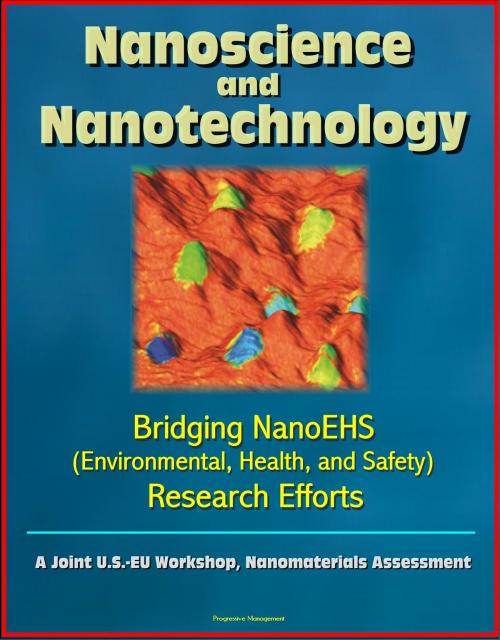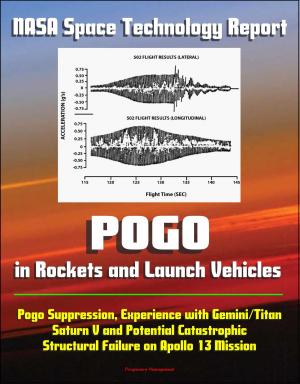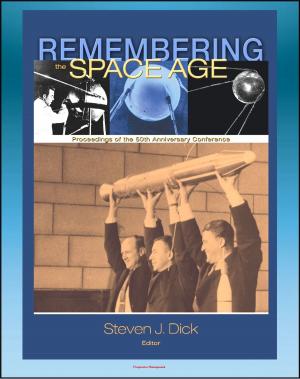Nanoscience and Nanotechnology: Bridging NanoEHS (Environmental, Health, and Safety) Research Efforts: A Joint U.S.-EU Workshop, Nanomaterials Assessment
Nonfiction, Science & Nature, Technology, Nanotechnology| Author: | Progressive Management | ISBN: | 9781301637744 |
| Publisher: | Progressive Management | Publication: | May 3, 2013 |
| Imprint: | Smashwords Edition | Language: | English |
| Author: | Progressive Management |
| ISBN: | 9781301637744 |
| Publisher: | Progressive Management |
| Publication: | May 3, 2013 |
| Imprint: | Smashwords Edition |
| Language: | English |
Nanomaterials are increasing in complexity and number, and the responsible development of nanotechnology-enabled (nano-enabled) commercial products is proving challenging because many near- and long-term environmental, health, and safety (nanoEHS) questions—such as the potential toxicity of some nanoscale materials—are incompletely answered. The United States and the European Union share the need to address these questions with the best available science and to engage with international partners to exchange information, develop best practices, and leverage limited resources.
To these ends, the United States and the European Union jointly hosted a workshop, U.S.-EU: Bridging NanoEHS Research Efforts, on March 10-11, 2011, in Washington, DC. This workshop brought together researchers, industry representatives, public health stakeholders, and regulatory scientists from Europe and the United States. The primary goals of the workshop were to engage in an active discussion about EHS questions for nano-enabled products, encourage joint programs of work that could leverage research assets and resources, and identify mechanisms to expand collaboration.
The structure of this report reflects the program of the workshop, which was broadly divided into four parts: Understanding U.S. and EU Perspectives and Programs; Data Needs for Regulatory Decision Making; Tackling the Challenges of Producing Reliable and Reproducible Data for Nanomaterials Assessment and Risk Management; and Collaborative Mechanisms for Joint Work.
Purpose and Goals * Research-to-Regulation Transition Needs * Overview of EC Nano-EHS Research Plans * Overview of the U.S. 2011 EHS Research Strategy * OECD WPMN: Latest Developments and Outlook * Standardization for Nanosafety: ISO Plans and Perspective * Examples of EU National Efforts * Examples of U.S. Efforts: Nanotechnology Research in NIOSH * Research in Support of Consumer Protection Legislation * EU Industry: Safety Research as an Integral Part of the Industrial Innovation Strategy * U.S. Industry: Defining Research Needs and Crop Protection Products * U.S. NGO: Focus and Approach in Developing Plans * 3. Data Needs for Regulatory Decision Making * General Components of Regulatory Decision Making and Data Needs * Breakout 1: Human Health Data Needs * Introductory Talks * Summary of Participant Comments * Breakout 2: Environment Data Needs * Introductory Talks * Summary of Participant Comments * Regulatory Panel Discussion on Comments from the Two Breakout Groups on Health and Environment * 4. Tackling the Challenges of Producing Reliable, Reproducible Data for Nanomaterials Assessment and Risk Management * Testing and Risk Assessment of Nanomaterials * Breakout Sessions on Human Health and Ecological Effects * Breakout 1: When do Unique Properties—with Risk Assessment Implications—Arise for Specific Nanomaterials? * Introductory Talks * Summary of Participant Comments * Breakout 2: How do Surface Modifications and Chemical Transformations Affect Toxicity? * Introductory Talks. * Summary of Participant Comments * Breakout 3: What Metrics Are Most Scientifically Accurate When Relating Dose to Response in Toxicity Assessments? How are Dose-Response Data Best Extended to Determining Occupational Exposure Limits and Environmentally Relevant Concentrations? * Introductory Talks * Summary of Participant Comments * Breakout Sessions on Measuring Exposures and Fate of Nanoparticles in the Workplace and the Environment * Breakout 4: How Relevant are Model Nanoparticles to Understanding Exposure in the Workplace? * How Relevant are they to Recommending Industrial Hygiene Practices?
Nanomaterials are increasing in complexity and number, and the responsible development of nanotechnology-enabled (nano-enabled) commercial products is proving challenging because many near- and long-term environmental, health, and safety (nanoEHS) questions—such as the potential toxicity of some nanoscale materials—are incompletely answered. The United States and the European Union share the need to address these questions with the best available science and to engage with international partners to exchange information, develop best practices, and leverage limited resources.
To these ends, the United States and the European Union jointly hosted a workshop, U.S.-EU: Bridging NanoEHS Research Efforts, on March 10-11, 2011, in Washington, DC. This workshop brought together researchers, industry representatives, public health stakeholders, and regulatory scientists from Europe and the United States. The primary goals of the workshop were to engage in an active discussion about EHS questions for nano-enabled products, encourage joint programs of work that could leverage research assets and resources, and identify mechanisms to expand collaboration.
The structure of this report reflects the program of the workshop, which was broadly divided into four parts: Understanding U.S. and EU Perspectives and Programs; Data Needs for Regulatory Decision Making; Tackling the Challenges of Producing Reliable and Reproducible Data for Nanomaterials Assessment and Risk Management; and Collaborative Mechanisms for Joint Work.
Purpose and Goals * Research-to-Regulation Transition Needs * Overview of EC Nano-EHS Research Plans * Overview of the U.S. 2011 EHS Research Strategy * OECD WPMN: Latest Developments and Outlook * Standardization for Nanosafety: ISO Plans and Perspective * Examples of EU National Efforts * Examples of U.S. Efforts: Nanotechnology Research in NIOSH * Research in Support of Consumer Protection Legislation * EU Industry: Safety Research as an Integral Part of the Industrial Innovation Strategy * U.S. Industry: Defining Research Needs and Crop Protection Products * U.S. NGO: Focus and Approach in Developing Plans * 3. Data Needs for Regulatory Decision Making * General Components of Regulatory Decision Making and Data Needs * Breakout 1: Human Health Data Needs * Introductory Talks * Summary of Participant Comments * Breakout 2: Environment Data Needs * Introductory Talks * Summary of Participant Comments * Regulatory Panel Discussion on Comments from the Two Breakout Groups on Health and Environment * 4. Tackling the Challenges of Producing Reliable, Reproducible Data for Nanomaterials Assessment and Risk Management * Testing and Risk Assessment of Nanomaterials * Breakout Sessions on Human Health and Ecological Effects * Breakout 1: When do Unique Properties—with Risk Assessment Implications—Arise for Specific Nanomaterials? * Introductory Talks * Summary of Participant Comments * Breakout 2: How do Surface Modifications and Chemical Transformations Affect Toxicity? * Introductory Talks. * Summary of Participant Comments * Breakout 3: What Metrics Are Most Scientifically Accurate When Relating Dose to Response in Toxicity Assessments? How are Dose-Response Data Best Extended to Determining Occupational Exposure Limits and Environmentally Relevant Concentrations? * Introductory Talks * Summary of Participant Comments * Breakout Sessions on Measuring Exposures and Fate of Nanoparticles in the Workplace and the Environment * Breakout 4: How Relevant are Model Nanoparticles to Understanding Exposure in the Workplace? * How Relevant are they to Recommending Industrial Hygiene Practices?















